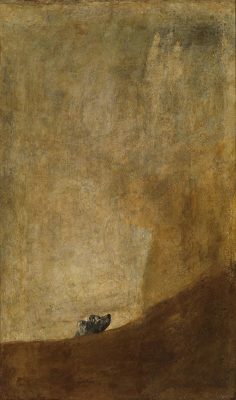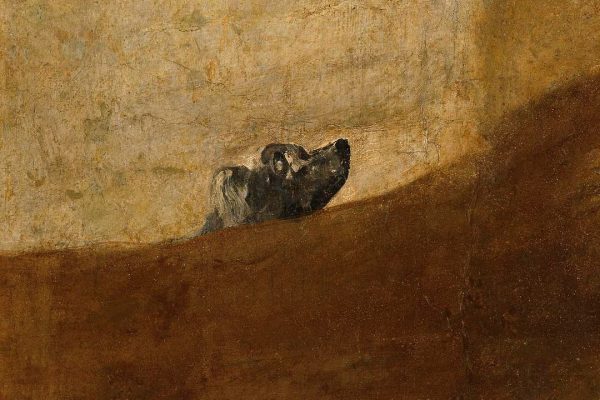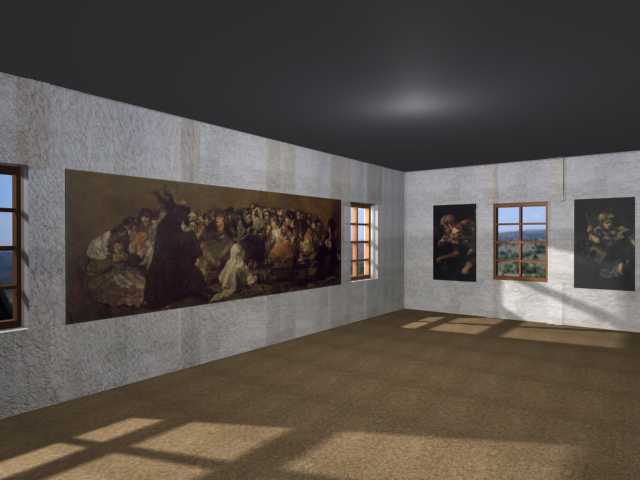Francisco de Goya · The dog
1820 – 1822 – Fresco transferred to canvas – Madrid, Museo del Prado
In 1819, Goya moved to a property in the outskirts of Madrid -later known as the “Quinta del Sordo (Deaf Man’s House)”- where he painted his famous Black Paintings, a group of fourteen or fifteen heartrending paintings, such as “Witches’ Sabbath” or the (in)famous “Saturn devouring one of his sons”.
In the middle of such panorama, next to a door, lonely and vulnerable, we found “The Dog“. This is perhaps the most enigmatic painting of the entire Quinta. It depicts a dog, totally hidden except for his head, painted against an ochre background. We know nothing more about the protagonist or the meaning of this fresco. Where is that dog? What is he looking at? Is he sinking, or, on the contrary, he sticks his head out cautiously, afraid of something we are not able to see?
There are many interpretations of this painting, associating the dog to the infernal figure who guides the dead souls to the underworld, or suggesting that the dog is a symbol of the abandonment and the neglect. Simple yet extremely powerful, “The Dog” has been praised by many modern painters. Antonio Saura called it “the world’s most beautiful picture“, and Joan Miró admitted that “The Dog” was -along with Velázquez’s “Las Meninas”– his favourite painting in the Prado Museum
Text by G. Fernández, theartwolf.com
Follow us on:



